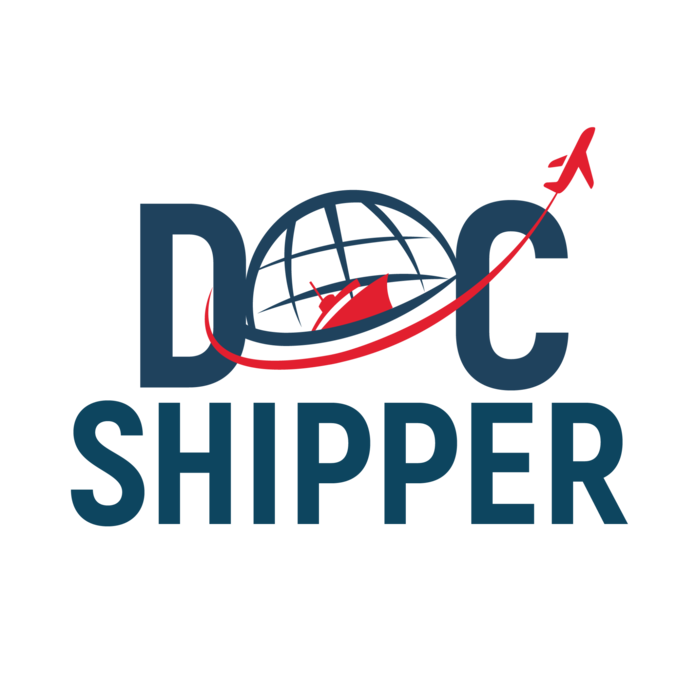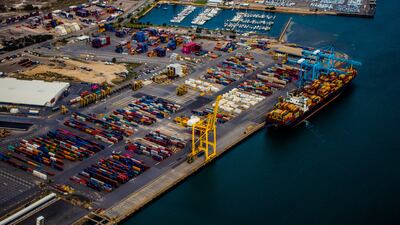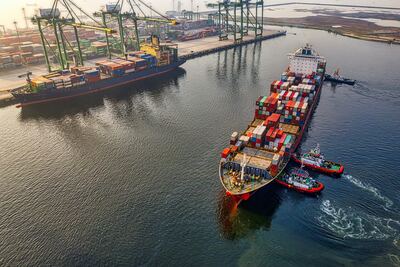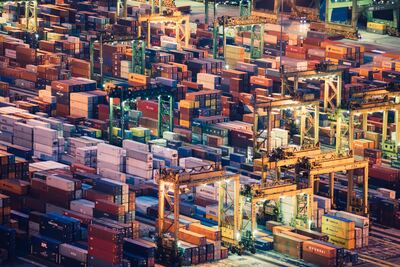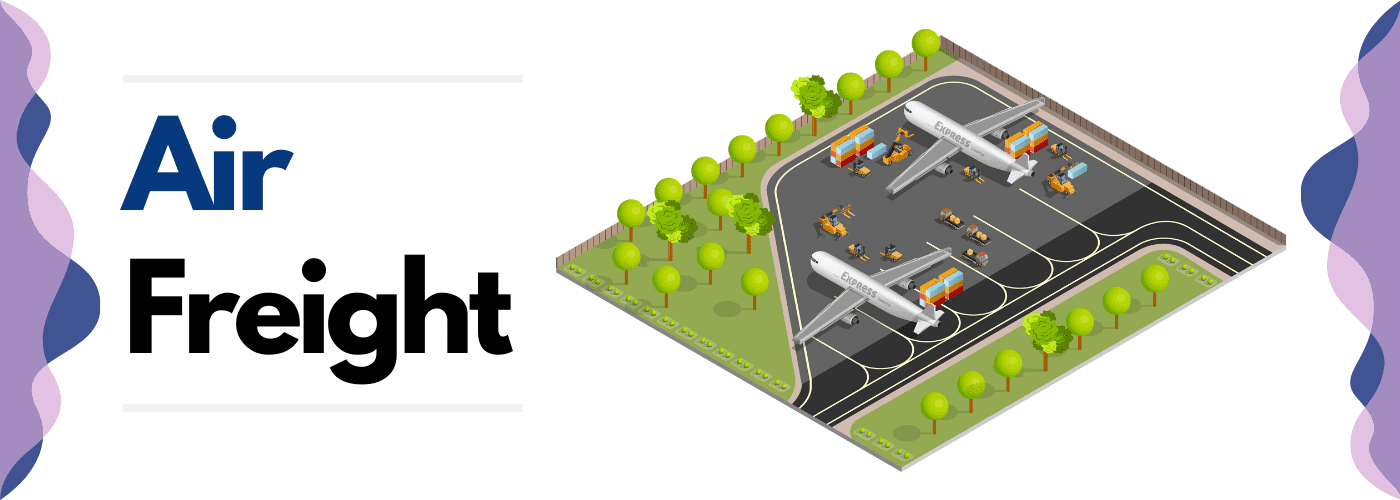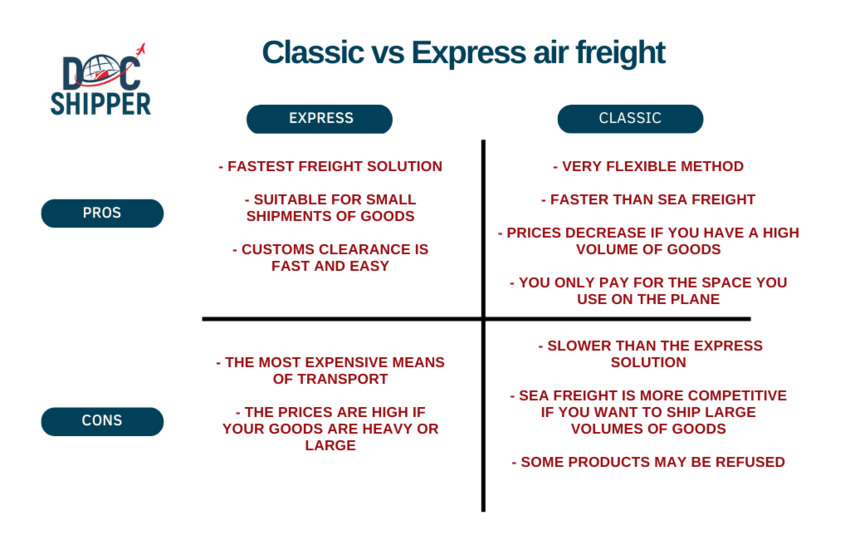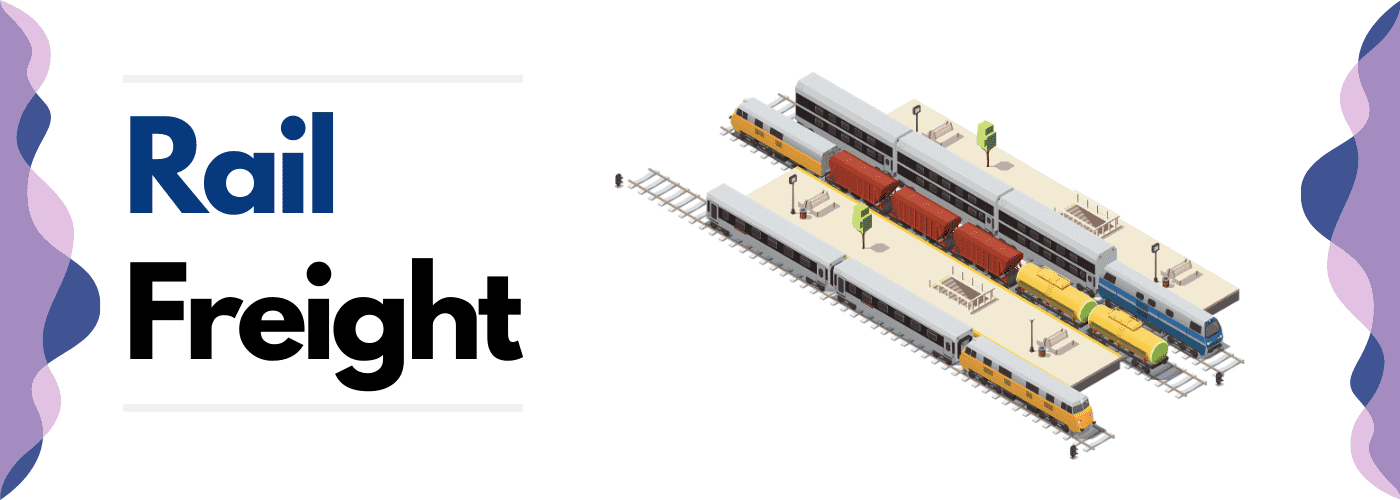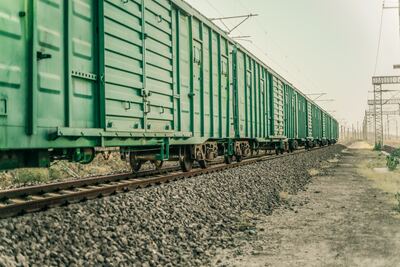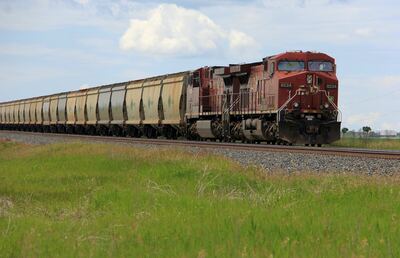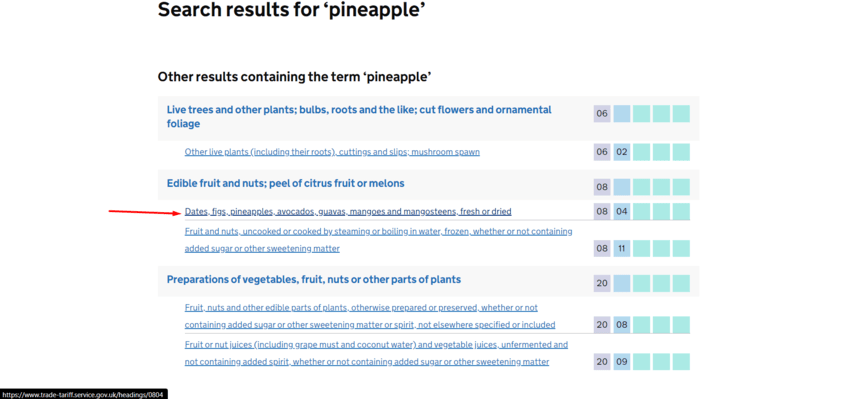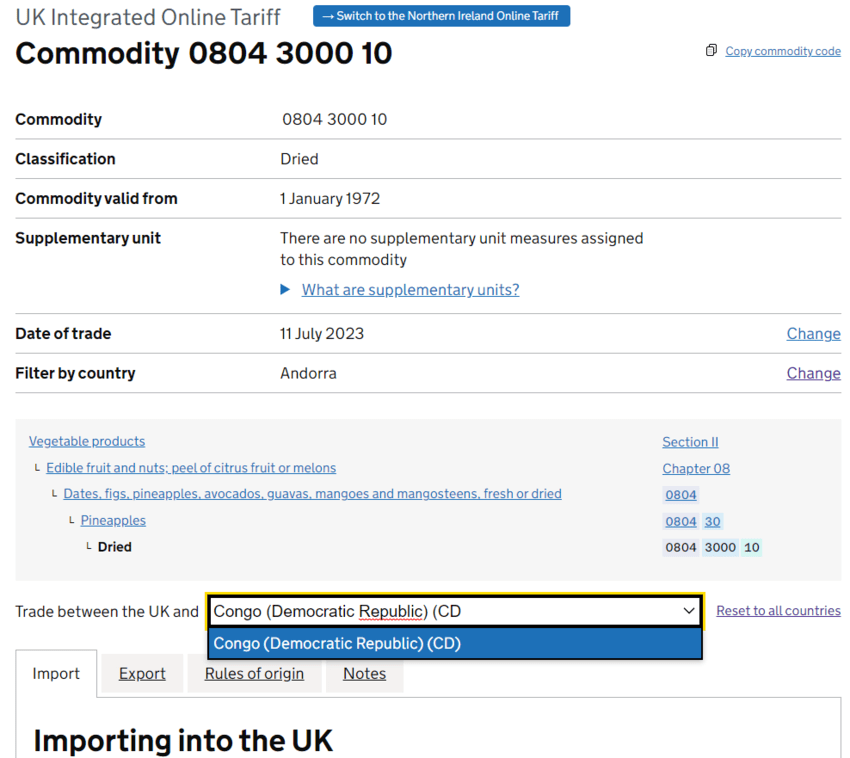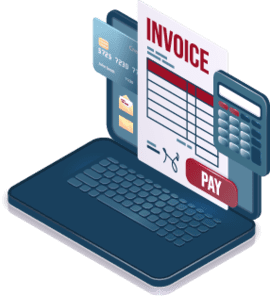A well-established and dependable freight network plays a crucial role in promoting trade and fostering strong economic ties between the UK and the DRC. The connection between these two countries relies on a diverse array of transportation modes, including sea, air, and rail.
These various transportation options work in synergy to facilitate the seamless and prompt delivery of a wide range of goods, encompassing raw materials, manufactured products, and consumer goods.
DocShipper is a comprehensive logistics provider specializing in facilitating the transportation of goods between the UK and the DRC. Leveraging their extensive network and expertise in international shipping, DocShipper offers customized solutions tailored to the specific needs of businesses, ensuring a streamlined and efficient transport process. Their services encompass all aspects of freight management.
Table of Contents
The different methods of transportation between the UK and the DRC
There are several transportation options for shipping freight between the UK and the DRC, offering a range of available methods.
Over the past few years, the trade volume of freight between the UK and the DRC has shown steady growth. This is attributed to increasing economic cooperation and trade relations between the two countries, leading to a rise in the movement of goods.
Here are the best options to suit you:
Sea freight from the UK to DRC
DocShipper Recommendation: Sea freight is the best option for you if :
- The total weight of your shipment is more than 2 CBM.
- You want the cheapest way of transportation.
DocShipper Note: If you want some advice, don't hesitate and contact us, we will answer you in less than 24 hours!
Ocean freight between the UK to DRC
Did you know that sea freight has been a vital mode of transportation between the United Kingdom (UK) and the Democratic Republic of the Congo (DRC) for centuries? Here's a brief overview of the process, along with an interesting anecdote:
Sea freight remains one of the most reliable and cost-effective ways to transport goods from the UK to the DRC
The historical relationship between the UK and the DRC, formerly known as the Belgian Congo, dates back to the colonial era. During that time, goods and resources were transported via sea freight from the DRC to the UK, contributing to the development of trade and economic ties between the two regions.
Today, sea freight continues to play a crucial role in facilitating trade and connecting businesses in the UK with the DRC. By leveraging the expertise of freight forwarders and following the necessary procedures, you can ensure a smooth and efficient shipping process.
Sea freight is the optimal choice in the following situations:
- When there is a significant distance between the departure and arrival points.
- When your goods have a volume exceeding 2 cubic meters.
- When time restrictions do not apply.
Advantage
Cost: Sea freight is more cost-effective than air freight because ship operating costs are lower, making it economically advantageous for transporting large quantities of goods.
Capacity: Freight ships have the capability to transport substantial amounts of cargo due to their larger size and storage capacity.
Flexibility: Freight ships have the ability to sail to numerous ports, providing flexibility in terms of destination choices.
Versatility: Freight ships are capable of transporting various types of goods, making them suitable for a wide range of cargo.
Fewer Restrictions: Compared to air freight, sea freight is subject to fewer security and regulatory restrictions, simplifying transportation operations.
Safety: Containers used in sea freight are designed to withstand erosion and different weather conditions, ensuring the safety of the goods.
Disadvantage
Transit Time: Sea freight may have longer transit times compared to other modes of transportation due to slower sailing speeds and stops at different ports for loading and unloading. The average duration of a shipment can range from one week to one month.
Reliability: The reliability of sea freight can be compromised by delays caused by unfavorable weather conditions, port strikes, and other disruptions.
Risks: Sea freight is exposed to security risks such as piracy and acts of terrorism. There is also a risk of goods being damaged during the loading and unloading processes.
Global Network: Some countries lack direct maritime access, which limits the extent of the global sea freight network. In such cases, it may be necessary to rely on road transportation from a neighboring country with a port.
Main ports of the UK
Port of Felixstowe: , located on the eastern coast of England near Felixstowe in Suffolk, is a prominent container port. It is recognized as the largest container port in the UK and one of the busiest in Europe. With a capacity to handle more than 4 million TEUs (twenty-foot equivalent units) of cargo annually, the port benefits from excellent road and rail connections within the country and direct shipping routes to major ports worldwide. Known for its efficiency, dependability, and pioneering approaches in the container shipping sector, the Port of Felixstowe plays a vital role in supporting UK trade and facilitating the global supply chain.
Port of London Gateway: situated on the Thames Estuary in Essex, England, is a modern deep-sea container port. Established in 2013, it is recognized as one of the most recent and technologically advanced ports in the UK. With cutting-edge facilities, including a substantial container terminal, automated cranes, and a rail terminal, the port has the capacity to handle more than 3.5 million TEUs of cargo annually. Designed to accommodate the largest container vessels globally, the Port of London Gateway plays a crucial role in international trade and benefits from excellent connectivity to major transportation networks.
Port of Southampton: Situated on the southern coast of England, the Port of Southampton functions as a prominent container and cruise port. It stands out as the busiest cruise port in the UK and handles over 1.8 million TEUs of containerized cargo annually. The port benefits from excellent road and rail connections across the UK and maintains direct shipping routes to major international ports. With a long-standing maritime heritage, the Port of Southampton has played a significant role in shaping the UK's shipping industry. Today, it serves as a crucial hub for global trade and continues to be a favored destination for cruise ships and their passengers.
Port of Tilbury: Positioned on the banks of the River Thames, around 25 miles to the east of central London, the Port of Tilbury boasts a rich history dating back a hundred years. Today, it has become one of the largest ports in the UK, catering to diverse cargo types such as containers, roll-on/roll-off (ro-ro) freight, bulk commodities, and forest products. The port also holds great significance for the construction industry, facilitating the smooth movement of a substantial volume of building materials. Leveraging its advantageous location and excellent transportation connections, the Port of Tilbury serves as a crucial gateway to the UK and Europe, playing a pivotal role in bolstering the country's economy.
Main port of RDC

- Port of Matadi: Located on the Congo River in the western part of the country, the Port of Matadi is the primary seaport of the DRC. It serves as a key access point for international trade and maritime transportation. The port handles a wide range of cargo, including containerized goods, bulk commodities, and petroleum products. Its strategic location and connectivity to major inland cities make it a vital hub for the import and export activities of the DRC.
- Port of Boma: Situated near the mouth of the Congo River, the Port of Boma is another significant port in the DRC. While it is not as large as the Port of Matadi, it plays a crucial role in facilitating river and maritime transport along the coast. The port handles various types of cargo, including agricultural products, minerals, and general merchandise. It serves as an important trade link for the coastal region of the DRC.
- Port of Kinshasa: Located on the Congo River in the capital city of Kinshasa, the Port of Kinshasa is an essential inland port in the DRC. It serves as a major transportation hub for the country's capital and surrounding areas. The port facilitates the movement of goods by river vessels and barges, connecting Kinshasa to other river ports within the DRC and neighboring countries. It handles a range of cargo, including consumer goods, construction materials, and fuel.
Transit time between the UK and the DRC
The transit time between the United Kingdom (UK) and the Democratic Republic of the Congo (DRC) for sea freight can vary depending on several factors, including the specific route, carrier, port congestion, and customs procedures. Generally, the estimated transit time for sea freight from the UK to the DRC ranges from four to eight weeks. However, it's important to note that these are approximate times and can be subject to variations and unforeseen circumstances
| Port of Felixstowe | Port of London Gateway | Port of Southampton | Port of Tilbury | |
| Port of Matadi | 4-6 weeks | 4-6 weeks | 4-6 weeks | 4-6 weeks |
| Port of Boma | 4-6 weeks | 4-6 weeks | 4-6 weeks | 4-6 weeks |
| Port of Kinshasa | 5-7 weeks | 5-7 weeks | 5-7 weeks | 5-7 weeks |
To obtain the most precise and current transit time information, it is crucial to seek guidance from the shipping company or freight forwarder. They can offer specific details based on your shipping needs and the present shipping schedules.
During the transit between ports in the United Kingdom (UK) and the Democratic Republic of the Congo (DRC), various complications can occur. Factors like unfavorable weather conditions, congestion at ports, customs procedures, vessel scheduling, and commercial disruptions can impact the transit time and overall shipping process. Collaborating with shipping lines and logistics providers is essential to anticipate and address these potential complications, ensuring a smoother shipping experience and mitigating any arising issues.
What container can I choose for shipment from UK to DRC ?
There are three primary standard container sizes that serve both personal and commercial transportation needs. These containers are commonly utilized by importers to transport a wide range of dry goods. The sizes are as follows:
- The 20-foot container, with a capacity of 33 cubic meters.
- The 40-foot container, with a capacity of 67 cubic meters.
- The 40-foot HQ (High Cube) container, which offers a larger capacity of 76 cubic meters.
In essence, these containers are extensively employed for the shipment of goods and are available in different sizes to accommodate various volumes of cargo.
Shipping is a reliable method of transporting large volumes, offering options for cargoes of different sizes. Two common options are full container load (FCL) and less than container load (LCL).
DocShipper Advice: We suggest considering the LCL (Less than Container Load) sea freight option if your shipment volume is between 2 m3 and 13/14 m3. This is a cost-effective choice for transportation. However, if you have a larger volume that can fill an entire container, it would be more economical to opt for full container delivery. If you have any questions or need further assistance, please don't hesitate to contact us.
Full container or FCL (Full Container Load)
"FCL," or "Full Container Load," is a commonly used term in shipping. It refers to a scenario where a single customer occupies the entire container space for shipping their goods from start to finish. The container is sealed by the supplier and remains sealed until it reaches the customer, minimizing risks and costs. This method is highly recommended when you have a substantial quantity of items to ship.
In summary, even if you only partially fill a container, it is more cost-effective and provides better stability for transporting a large volume of goods. To ensure profitability, shipping a full container is generally cheaper than shipping a partially filled one, with prices starting at 15 cubic meters.
Advantages of FCL shipping
- Profitability for large shipments: It is the most cost-effective method for transporting goods in bulk volume.
- Direct shipment without intermediate handling: The container is loaded and unloaded only once, reducing the risks of damage or loss of items.
- Secure transportation: Containers are locked and sealed for maximum security during transport.
Inconvenient of FCL shipping
- Transportation time: It can be extremely lengthy, lasting for over a month or longer.
- Minimum volume for cost-effectiveness: It is necessary to have a minimum volume of at least 15 cubic meters to make it economically viable.
Groupage by sea or LCL (Less than Container Load)
LCL shipping, which stands for "Less than Container Load," is a suitable alternative when you have additional products that don't fill a full container in terms of size or quantity. It allows you to pay only for the space you actually use, making it ideal for smaller shipments. In LCL shipping, your goods will be consolidated and stacked together with the shipments of other importers heading towards the same destination.
Advantages of LCL shipping
- Versatility: This type of shipping is suitable for all kinds of goods.
- Cost: It is the most cost-effective shipping method for small volumes, as customers only pay for the space their goods occupy.
Inconvenient of LCL shipping
- Delivery time: It is prolonged due to the loading and unloading of goods.
- Risks: The container will be opened multiple times for loading and unloading, thereby increasing the risks of damage or loss of goods.
DocShipper Advice: Usually, when you opt for a full container shipment, the pricing is a fixed amount for the entire container, instead of being calculated based on the cost per cubic meter. It's worth noting that the cost per cubic meter for full container shipment may differ from the cost per cubic meter for LCL sea freight. Regardless, choosing full container shipment is a prudent decision, irrespective of the position occupied within the container. If you have any additional questions or require further information, please feel free to contact us.
DocShipper Info:Sea freight plays a crucial role in international trade, accounting for approximately 80% of global trade volume and value. It provides the capacity to transport a wide range of goods, including raw materials, manufactured products, petroleum, vehicles, and chemicals. However, selecting the right container type and port for your specific shipping requirements can be a complex task.
At DocShipper, our shipping service is designed to simplify this process by offering expert guidance in choosing the most suitable container and port for your needs. Don't hesitate to contact our team of specialists for additional support and assistance.
Specialized maritime transport between UK and DRC
Refrigerated Container (Reefer Container)
A reefer container, also referred to as a refrigerated container, is a specialized shipping container designed specifically for transporting perishable goods and items that require temperature control. These containers are essential for safely and efficiently transporting perishable goods worldwide.
Roll-On/Roll-Off (RoRo)
RoRo, short for Roll-On/Roll-Off, is a cargo shipping method in which wheeled vehicles, such as cars, trucks, and trailers, are driven onto a vessel and securely fastened for transportation. This approach is commonly used for shipping vehicles, heavy machinery, and other large cargo items. RoRo shipping has become increasingly popular due to its speed, cost-effectiveness, and flexibility.
Bulk Cargo
Bulk cargo refers to the transportation of unpackaged solid or liquid goods on bulk carriers. This method involves transporting commodities such as coal, grain, ores, or petroleum in large quantities, rather than using individual packages or containers.
Out-of-Gauge (OOG)
Out-of-gauge (OOG) refers to cargo that exceeds the standard size and dimensions for regular container shipping. This can include cargo that is excessively heavy, tall, wide, or long to fit into a standard shipping container. Special arrangements are necessary to ensure the safe and secure transportation of OOG cargo, often involving specialized equipment such as flat racks, open-top containers, or dedicated breakbulk vessels.
At Docshipper, we take pride in our efficient management of specialist transport services between the UK and DRC. With our extensive experience in international logistics and a deep understanding of the unique requirements of different industries, we are well-equipped to provide customized and reliable transport solutions.
Our team of experts possesses comprehensive knowledge of the complexities involved in specialized shipping, including roll-on/roll-off, general cargo, and project cargo. We work closely with a network of trusted carriers who have the expertise and resources to handle complex freight requirements, ensuring the safe and efficient transportation of your goods.
You can expect proactive communication, timely updates, and a personalized approach from us throughout the transportation process. Contact us today for a free quote in less than 24h.
How much does sea freight cost between the UK and DRC?
The cost of sea freight between the UK and DRC depends on various factors such as the quantity and type of goods being transported, the type of vessel used, and the chosen container type. It is challenging to provide an exact price without knowing all these details.
However, we can offer guidance on the shipping method that would be most suitable for you. For instance, if you intend to ship goods with a volume exceeding 15 m³, a Full Container Load (FCL) would be more cost-effective. Conversely, if you wish to ship less than 15 m³, a Less than Container Load (LCL) would be the better choice.
You can also estimate the cost by knowing the exact weight and volume of your cargo. To do this, follow these three steps:
- Determine the Chargeable Unit (CU): Compare the weight and volume of your cargo based on the theory of maritime freight, which states that one tonne equals one cubic meter. The higher value between volume and weight will be the CU. For example, if you have a volume of 30 m³ and a weight of 35 tonnes, the CU will be 35 tonnes.
- Calculate the base freight: Multiply the cost of the CU by its number. Continuing with the previous example, if the CU cost is €550, the base freight will be €19,250 (550 x 35).
- Calculate the net freight: Use the following formula: Base freight + BAF (Bunker Adjustment Factor) + CSP (Currency Security Surcharge) - Rebate. The result will be the cost of your sea freight.
Please note that these steps provide a general estimation, and additional charges such as insurance, customs duties, and handling fees may apply. It is recommended to consult with shipping companies or freight forwarders to obtain accurate and detailed pricing information based on your specific shipping requirements.
Port and Shipping Surcharges
Port and shipping surcharges are additional fees imposed by transportation companies and ports that are not included in the standard tariff. These charges are determined based on specific factors. Here are the different types of surcharges:
Bunker Adjustment Factor (BAF) is an additional charge that accounts for fluctuations in the price of crude petroleum used for bunkering. It is applied to the cost of transporting the cargo and was introduced by shipping companies after the 1973 oil shock. The BAF has since remained in effect.
Currency Adjustment Factor (CAF) is a charge that considers currency-related adjustments. It is calculated based on the cargo cost, including the BAF, and is linked to fluctuations in the exchange rate of the dollar. As most marine cargo rates are quoted in dollars, the CAF protects businesses from currency conversion risks.
Terminal Handling Charge (THC) covers the expenses associated with terminal operations. It includes the costs of handling, stacking, and unloading cargo at ports. For full container load (FCL) shipments, the cost is determined by the container owner. In the case of less than container load (LCL) shipments, the cost is calculated based on weight or cubic meter.
Port Congestion Surcharge is an additional fee imposed when a vessel encounters significant delays due to port congestion. Shipping companies charge this fee to compensate for the revenue shortfall caused by the delays in unloading cargo at congested ports.
Docshipper Alert: Calculating shipping costs for transportation methods other than sea freight can be a daunting task. However, at DocShipper, we strive to make this process easier for you.
Our form allows you to provide the necessary information, and our dedicated team of professionals and assistants is available 24/7 to assist you with any questions or concerns you may have. Alternatively, you can contact us directly for further support and guidance.
Airfreight from the UK to DRC
DocShipper Recommendation: Airfreight is the best solution for you if :
- The total volume is less than 2 CBM.
- If the transportation time must be very quick.
DocShipper Note: If you require any information, fulfill our online form and our experts will get back to you in less than 24 hours.
Air freight between the UK and DRC
Air freight between the UK and the DRC offers faster transit times and is suitable for time-sensitive shipments. Major airports in the UK provide convenient connections to the DRC. However, air freight is generally more expensive than sea freight. It is important to check cargo capacity and comply with customs regulations. Air freight is suitable for various cargo types but may have size and weight limitations. Consulting with airlines or freight forwarders is recommended for accurate information.
Conventional or express air freight?
There are two types of air freight options: conventional air freight and express air freight. Conventional air freight is suitable for larger shipments that are not time-sensitive. It involves consolidating multiple shipments into a single air cargo container, making it cost-effective for bulky or heavy items that do not require immediate delivery. However, the consolidation process in conventional air freight results in longer transit times and multiple handling points during the journey.
On the other hand, express air freight is designed for time-sensitive shipments that require fast and reliable delivery. It offers expedited transit times with minimal handling points, ensuring quicker transportation. Express services prioritize speed, making them ideal for urgent shipments or goods with short shelf lives. However, express air freight generally comes at a higher cost due to the premium service and faster transit times.
When choosing between conventional and express air freight, consider the following factors:
- If your shipment is time-critical and needs to reach its destination quickly, express air freight is the better option.
- If you have a limited budget and can accommodate longer transit times, conventional air freight provides a more cost-effective solution.
- Conventional air freight is better suited for larger, bulkier items, while express air freight is more suitable for smaller, lightweight shipments.
DHL is a global logistics company that offers both conventional air freight and express air freight services between the UK and DRC. They have an extensive network of air cargo services and operate flights worldwide. Other companies such as FedEx and UPS also provide air freight services between the UK and DRC, offering both conventional and express options. It is recommended to directly contact these companies or visit their websites for detailed information about their services, rates, and schedules.
Shipping companies offer the advantage of delivering goods to any destination worldwide within a week, which is particularly beneficial for small quantities of less than 1 cubic meter. This makes their services more cost-effective and attractive compared to maritime shipping.
Advantages of air freight
- Reliable and timely transportation: Airfreight offers consistent flight schedules and reliable arrival times, with frequent departures reducing disruptions even if a flight is missed.
- Global coverage: Airfreight provides extensive global reach, connecting to almost every corner of the world, allowing goods to be shipped to nearly any location.
- Lower insurance costs and enhanced security: Shorter transit times of air cargo lead to lower insurance premiums, while strict controls at airport facilities minimize the risk of theft and damage to cargo.
Disadvantages of air freight
- Costs: Air freight is often more expensive than other modes of transportation due to maintenance, fuel, and airport taxes.
- Weight and volume limitations: Airplanes have restrictions on weight and volume, which can limit the quantity of goods that can be transported at once.
- Longer security checks: Inspectors and security controllers may take longer to inspect air cargo, resulting in additional delays.
- High carbon footprint: Air transportation contributes to greenhouse gas emissions, which has a negative impact on the environment.
DocShipper Advice: If you require swift delivery of your products, we suggest opting for air freight as it offers the fastest and, in some cases, the most cost-effective solution. We offer a variety of air freight options tailored to meet your specific needs. To receive expert advice and support, please complete our online form. Our team of specialists is ready to assist you every step of the way.
How much does air freight cost between the UK and the DRC?
The cost of air freight is determined by several factors. The main factors to consider include the weight and volume of the goods, the distance and flight time, the type of aircraft, and the type of freight.
Once these factors are known, it is possible to determine the pricing based on weight ranges and decreasing rates set by the airlines.
It is important to note that the volumetric weight is generally taken into account for calculating the cost of air freight. In fact, the airline will consider the weight that is most advantageous to them, which is often the volumetric weight that is higher than the actual weight.
Next, the cost of your air freight will be equal to the chargeable weight multiplied by the price per kilogram. There will always be a minimum price requirement for very small shipments.
How to calculate the volumetric weight of your shipment?
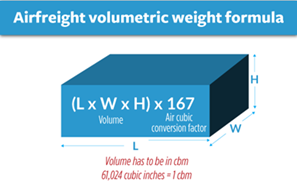
The gross weight of the cargo includes the weight of the goods and the weight of their packaging or pallet.
The volumetric weight is the space occupied by a parcel, based on its dimensions and gross weight. To calculate the volumetric weight, you first need to measure the dimensions of the package (length, width, and height), and then convert them to cubic meters. Then, you can use the following formula:
Volumetric weight = (length x width x height) / 5000
(where 5000 is a standard conversion factor used in air freight)
Rail freight between the UK and the Democratic Republic of the Congo (DRC)
Rail freight between the UK and the Democratic Republic of the Congo (DRC) is not a direct transportation option due to the geographical distance and lack of direct rail connections between the two countries. Currently, there is no continuous rail network that spans across Europe and Africa, connecting the UK to the DRC.
However, it is possible to transport goods by rail within Europe and then explore alternative transportation modes, such as sea freight or air freight, to reach the DRC. The rail network in Europe is well-developed, and it offers efficient and cost-effective transportation options for freight. You can utilize rail services to transport goods from the UK to a European port or hub, and then choose an appropriate mode of transport to continue the journey to the DRC.
For example, you can consider shipping your goods by rail from the UK to a European port, such as Antwerp in Belgium or Rotterdam in the Netherlands. From there, you can explore sea freight options to transport the goods to a suitable port in Africa, such as Matadi in the DRC. Alternatively, you can opt for air freight to transport the goods from Europe to an airport in the DRC.
It is important to note that the specific logistics and costs associated with rail freight, as well as the overall transportation route, will depend on various factors such as the nature of the goods, volume, timelines, and available transport infrastructure
The main freight railway terminals in the UK
- Felixstowe Freight Terminal: Located in Felixstowe, Suffolk, it is the largest container port in the UK and serves as a major gateway for international freight, particularly containerized cargo.
- Southampton Freight Terminal: Situated in Southampton, Hampshire, it is another significant container port and freight terminal that handles a large volume of cargo, including containers, bulk commodities, and vehicles.
- London Gateway Freight Terminal: Located in Stanford-le-Hope, Essex, it is a relatively new and state-of-the-art deep-sea container port and logistics park that offers efficient handling and distribution of freight.
- Trafford Park Freight Terminal: Situated in Manchester, it is one of the largest inland ports in the UK and serves as a major hub for freight transportation, handling a wide range of goods including containers, bulk cargo, and industrial materials.
- Birmingham Intermodal Freight Terminal: Located in Birmingham, it is a strategically important freight terminal that provides connections to various regions in the UK, offering efficient intermodal transportation and distribution services.
- Coatbridge Freight Terminal: Situated in Coatbridge, North Lanarkshire, Scotland, it is a key rail freight terminal handling a variety of goods including containers, aggregates, and timber, serving both domestic and international markets.
The main freight railway terminals in DRC
The Democratic Republic of the Congo (DRC) has several significant freight railway terminals that play a crucial role in the country's transportation of goods. Some of the main freight railway terminals in the DRC include:
- Matadi Port: Located in Matadi, the main seaport of the DRC, it serves as an important gateway for international trade and handles a considerable volume of cargo. The port is connected to the national railway network, allowing for the efficient transfer of goods to various parts of the country.
- Kinshasa Central Station: Situated in the capital city of Kinshasa, the Kinshasa Central Station is a major railway terminal that serves as a hub for both passenger and freight transportation. It connects various regions within the DRC and provides access to neighboring countries.
- Lubumbashi Freight Terminal: Located in Lubumbashi, the second-largest city in the DRC, this freight terminal is a key transportation hub in the southern part of the country. It facilitates the movement of goods to and from neighboring countries like Zambia and connects to other major cities within the DRC.
- Kisangani Freight Terminal: Situated in Kisangani, a city located in the northeastern part of the DRC, this freight terminal serves as an important point for the transportation of goods in the region. It connects to other parts of the country through the railway network.
Advantage
Reduced transportation costs: Railway freight is often more cost-effective compared to transportation methods such as road or air.
Sustainability: Railway transportation is more sustainable in terms of carbon emissions and energy consumption compared to other modes of transport.
High carrying capacity: Rail transport can handle large quantities of goods in a single shipment.
Reliability: Trains are less prone to delays and disruptions compared to other modes of transport.
Safety: Railway transportation is considered safer for goods compared to other modes of transport due to increased monitoring and regulations.
Disadvantages
Limited infrastructure: Railway infrastructure can be limited in certain regions, making transportation challenging in some areas.
Limited flexibility: Rail transport is generally less flexible than other modes of transportation in terms of delivery and handling.
Door-to-door service between the UK and DRC
We will handle all the necessary tasks involved in an international shipment on your behalf:
- Packaging: We will ensure that your goods are properly packaged for safe transportation.
- Managing administrative documents: We will take care of handling all the required paperwork such as invoices, cargo lists, import/export licenses, and other relevant documents.
- Loading/unloading and final delivery: Our team will handle the loading and unloading of your goods and ensure their safe and timely delivery to the final destination.
At DocShipper, our aim is to provide tailored services that meet your specific requirements. We follow international standards in all our operations to ensure a reliable and efficient service. Whether you need to ship your goods anywhere in the world, we offer competitive pricing and high-quality logistics solutions.
Throughout the entire shipment process, a dedicated representative from our company will oversee all the logistical aspects, ensuring smooth coordination and communication. Additionally, for shipments weighing less than 100 kilograms, we offer express shipping options to expedite delivery. We have established partnerships with reputable companies such as DHL, FedEx, and TNT to guarantee swift and reliable shipment of your goods.
What are the benefits of using a door-to-door service?
By opting for a door-to-door service, you can substantially decrease your shipping expenses and significantly reduce the transit time of your shipments.
For shipments that weigh less than 150 kg, the expedited service provides a more economical option, ensuring efficient delivery.
We have established partnerships with reputable companies like FedEx, DHL, TNT, and UPS, ensuring the secure and timely arrival of your shipment.
What are the advantages of door-to-door services?
Time-saving: As mentioned earlier, with a door-to-door service, you can eliminate the worries of shipping your goods and focus your time on marketing, management, and other activities.
Expertise: By placing your freight order with DocShipper Shipping, you will benefit from a high-quality, customized service thanks to the professional expertise of our staff and our advanced knowledge in the field. You will be able to track every step of the shipping process and receive answers to all your inquiries through our attentive experts.
Security: We guarantee secure delivery. Our experience in the field ensures the safe shipment of your goods.
Customs clearance in the UK for freight shipping from DRC
If you need help importing goods from the UK to the DRC, we will provide you with step-by-step assistance in navigating the customs clearance process. This section is designed to acquaint you with the specific regulations and obligations in the UK.
Here, you will find a wide range of informative materials to help you comprehend how various responsibilities and costs, including duties and taxes, are determined and collected.
The consequences of Brexit and changes to trade
The consequences of Brexit have brought about changes to trade between the UK and the DRC. As the UK has exited the European Union, new trade agreements and regulations now govern the bilateral trade relationship between these two countries.
One significant change is the introduction of customs procedures and border controls. Importers and exporters are now required to comply with customs requirements, such as submitting customs declarations and providing necessary documentation for trade transactions. This has added administrative burden and potentially increased the time and cost associated with cross-border trade.
Tariffs and trade barriers have also been impacted. The UK has established its own tariff schedule, which may differ from the previous EU tariffs. This means that importers and exporters need to understand and comply with the new tariff rates, which can affect the cost of goods traded between the UK and the DRC.
Additionally, changes to regulations and standards have implications for product compliance and certification. Previously, goods conforming to EU standards could freely circulate between the UK and the DRC. However, post-Brexit, businesses must ensure their products meet the respective UK and DRC regulations to avoid any disruptions in trade.
Overall, Brexit has led to a shift in the trade dynamics between the UK and the DRC. Businesses are navigating through new requirements, paperwork, and potential trade barriers to ensure a smooth flow of goods between the two countries. It is crucial for importers and exporters to stay updated on the evolving trade regulations and seek appropriate guidance to mitigate any challenges and capitalize on new opportunities.
Trading Identity
In order to engage in the importation and sale of a significant volume of goods in the UK, it is essential to establish a registered trading entity. This registration requirement does not specifically dictate the type of company you must form; it can be a sole trader, partnership, limited company, or any other suitable business structure. Registering your trading identity is crucial as it allows you to provide HMRC (Her Majesty's Revenue and Customs) with a self-assessment explanation regarding the goods you have bought or sold.
If you are importing goods solely for personal use, there is no requirement to register as a business entity.
However, if your intention is to sell imported goods within the UK, it is necessary to register as a business. This enables HMRC to verify that you are paying the correct duty on your imports.
How to Calculate Customs Duties and Taxes
To ascertain the customs duties and taxes applicable to your imports, these charges are typically calculated based on a percentage of the CAF (Cost, Insurance, and Freight) value of the goods. It is advisable to frequently visit the dedicated website of the government that provides information on tariff and customs duty calculations to stay informed about any updates or changes. This will ensure that you have the most accurate and up-to-date information regarding the applicable charges for your imports.
Finding the HS Code
To access information about the specific product you are shipping, you can visit the provided website. This resource will assist you in determining the appropriate HS code, also known as a product code, for each item included in your international shipment. It is crucial to accurately assign the HS code as it plays a significant role in determining the amount of import duties or other applicable taxes that you will be required to pay.
The British HS tariff code is a valuable tool that aids in identifying product names and codes for both export and import purposes. It offers pertinent details about the codes, such as whether a permit is necessary for transporting your goods or if any tariff quotas apply. Utilizing the British HS tariff code will ensure that you have the necessary information to comply with customs regulations and accurately calculate the duties and taxes associated with your shipment.
How to know customs duties and taxes?
Gaining an understanding of the customs duties and taxes applicable to the products you intend to import into the UK is essential for accurate cost estimation. The HS code, also known as the Commodity Code, plays a pivotal role in determining the duty rate, in conjunction with factors such as the product's origin and value.
The Harmonized System (HS Code) is a universally adopted classification system utilized by 207 countries, covering a vast majority of global trade. This standardized system ensures consistent and harmonized classification of goods, promoting efficient trade facilitation and exchange of information.
Each product is assigned a unique numerical identifier within the HS Code, allowing for streamlined tracking of trade flows and facilitating the acquisition of relevant data.
Below, you will find a comprehensive breakdown of the HS Code, providing valuable information for accurate classification and understanding of the associated customs duties and taxes.
How to check the customs duties rate with the HS Code?
Having the HS code at your disposal, it becomes quite intriguing to discover the rate at which customs duties and charges are levied on your specific item upon its arrival in the UK.
To proceed, kindly revisit the previously shown page:
To access the comprehensive list and applicable rate for pineapples, kindly click on the "pineapple" link provided. This will enable you to view the specific details related to this product.
For maintaining the consistency of the rate concerning pineapples originating from China, please click on the full HS code displayed on the right side of the screen.
Your understanding and adherence to these instructions will facilitate a smooth and accurate assessment of customs duties and charges for pineapple imports.
Enter the country of origin here to see the customs duties rate.
Export and customs procedures and how to contact them
UK customs:
To contact the customs authorities in the United Kingdom (UK), you can follow these steps:
- Visit the official website of Her Majesty's Revenue and Customs (HMRC), the government department responsible for customs and taxation in the UK.
- Look for the "Contact Us" or "Customer Support" section on the HMRC website.
- You will find different contact options such as phone numbers, email addresses, and online inquiry forms.
- Choose the contact method that best suits your needs and preferences. If you have general inquiries, you can try calling the HMRC helpline or sending an email. For more specific queries or complex situations, it may be advisable to use the online inquiry form.
- Provide relevant information about your inquiry or request, including details about your business, the nature of your import/export activities, and any specific questions you have.
- Wait for a response from the customs authorities. It may take some time to receive a reply, especially during busy periods, so be patient.
Remember to visit the official HMRC website for the most accurate and up-to-date contact information and procedures.
DRC customs:
To contact the customs authorities in the Democratic Republic of the Congo (DRC), you can follow these steps:
- Visit the official website of the customs department in the DRC. Look for the contact or "Contact Us" section on their website.
- Check for the available contact information such as phone numbers, email addresses, or physical addresses of the customs office.
- Use the provided contact details to reach out to the customs authorities. You can either call them directly or send an email expressing your inquiry or request for assistance.
- If possible, try to provide specific details regarding your query or the nature of your business to ensure that you receive the most relevant and accurate information.
It is important to note that customs procedures and contact information may vary, so it is recommended to visit the official website or contact the relevant authorities directly for the most up-to-date and accurate information.
Will Docshipper impose customs duties?
No, there are no commissions taken by DocSHipper Shipping. As evidence, we will provide you with all the official documents provided by the customs authorities in the DRC. We will only charge the clearance fees, as we handle the customs declaration on your behalf.
The fees associated with customs duties and taxes will be collected by the DRC government.
Documents required for customs include:
The documents that DRC customs requires include:
- Commercial Invoice: A detailed invoice that includes information about the goods, such as the description, quantity, unit price, total value, and currency.
- Bill of Lading (B/L) or Airway Bill (AWB): A document issued by the carrier that serves as proof of shipment and contains details about the consignment, such as the origin, destination, and parties involved.
- Packing List: A detailed list that describes the contents of each package or container, including the quantity, weight, and dimensions.
- Import License: Some goods may require an import license or permit issued by the relevant authorities in the DRC. This license confirms that the goods meet the necessary requirements for importation.
- Certificate of Origin: A document that verifies the origin of the goods, stating the country in which they were produced or manufactured.
- Insurance Certificate: If the goods are insured, an insurance certificate may be required to provide proof of coverage.
- Customs Declaration: This document provides information about the imported goods, including their classification, value, and any applicable duties or taxes.
The documents that UK customs requires include:
Simplified customs procedures are designed to simplify and expedite the customs clearance process for imported goods. These procedures utilize electronic declaration methods, allowing for faster and more efficient processing at border crossings, free zones, and customs entry points. They aim to reduce paperwork, enhance transparency, and facilitate trade.
Certain goods may require import licenses, which are permits issued by the relevant authorities for specific categories of products. Examples of goods that often require import licenses include firearms and explosives, nuclear materials, controlled drugs, and military equipment. These licenses ensure that the importation of such goods is regulated and complies with applicable laws and regulations.
Temporary imports, such as goods imported for inspection, testing, repairs, professional demonstrations, or similar purposes, may be allowed without the need to pay duties and taxes. This provision enables businesses to conduct temporary activities or showcase products without incurring unnecessary financial burdens.
Other DocShipper logistics services
Transport insurance
The cost of insurance for cargo shipments can vary depending on various factors, including the shipping route, the nature of the goods, and the insurance company you choose. To ensure comprehensive coverage that includes potential damages or losses during transportation, it is possible to increase the declared value of the goods by up to 20%. This allows for additional protection beyond the actual value of the goods themselves. When obtaining cargo insurance, the policyholder will need to specify both the value of the goods being shipped and the primary transportation costs associated with the shipment.
For detailed information about cargo insurance, including coverage options and specific terms and conditions, we invite you to visit our dedicated page on Cargo Insurance. This page provides valuable insights and guidance on selecting the right insurance coverage for your cargo shipments, helping you mitigate risks and protect your investment during transit.
Supplier Management
In order to provide you with a comprehensive service, we actively engage with your supplier to gather detailed information about your products, ensuring a seamless and efficient process. Our team verifies that the supplier possesses all the necessary documentation, including a certificate of compliance, and conducts a thorough assessment of various aspects such as the product's condition, packaging, dimensions, and the applicable HS code.
At our company, we are dedicated to delivering exceptional service, and our team members are fluent in both English and French, enabling effective communication and smooth collaboration throughout the sourcing process.
For more detailed information about our sourcing services, we invite you to visit our dedicated website. There, you will find comprehensive information about our sourcing capabilities and how we can assist you in finding the right products for your business needs.
Packaging and Wrapping
The packaging of your products is crucial in ensuring their stability during transportation, providing optimal protection during storage, and facilitating efficient handling. We understand the importance of reliable packaging solutions, which is why we have established a network of industry specialists who excel in delivering top-notch packaging services worldwide. Whether you require cardboard boxes, pallets, bubble wrap, adhesive tape, or any other packaging materials, our experienced team is ready to assist you.
At our company, we prioritize the quality and effectiveness of packaging to safeguard your products throughout the entire logistics process. Our specialists are well-versed in selecting the appropriate packaging materials based on your specific requirements, ensuring that your goods arrive at their destination in pristine condition.
For more detailed information about our packaging services, we invite you to visit our dedicated website. There, you will find comprehensive details about the range of packaging solutions we offer and how we can customize our services to meet your unique needs.
Ownership and Storage
Our storage facilities are strategically situated near the northern border of Italy, offering convenient access for storing your goods before they are shipped to the United Kingdom or other destinations. With our secure and reliable storage solutions, you can rest assured that your items will be kept in optimal condition for any desired duration.
Whether you require storage to consolidate orders from multiple suppliers and fill a full container or need to divide the contents of a full container upon arrival at the port and distribute them to various locations, we have the expertise and resources to meet your specific requirements.
Our dedicated team is experienced in managing inventory, ensuring proper handling and storage of your goods. We prioritize safety and security, implementing robust measures to protect your products throughout their stay in our facilities.
To learn more about our Storage Service and explore the range of storage solutions we offer, we invite you to visit our dedicated page. There, you will find detailed information about our facilities, capabilities, and how we can tailor our services to meet your unique storage needs.
Personal Effects Shipping and Relocation
Whether you're moving to England or simply want to send extra luggage or personal items during your vacation, we offer dependable services for packaging, conditioning, and customs clearance to ensure the safe delivery of your personal effects. No matter where you are located, whether it's within Europe, the United Kingdom, or anywhere else worldwide, we are committed to providing a secure and efficient transportation process, right to your doorstep.
At international, we understand the value and importance of your personal belongings. Our experienced team is well-equipped to handle the intricacies of relocating your personal effects, ensuring they are properly packaged, protected, and handled with care throughout the entire journey.
We offer comprehensive relocation services tailored to your specific needs. From coordinating the logistics and paperwork to managing the transportation and delivery, we strive to make your relocation experience as smooth and stress-free as possible. With our extensive network and expertise in international moving, you can trust us to handle every aspect of your personal effects' journey with utmost professionalism and efficiency.
To learn more about our reliable moving services and how we can assist you with your relocation needs, please visit our dedicated page on international relocation services. There, you will find detailed information about our services, testimonials from satisfied customers, and the steps involved in the relocation process. We look forward to helping you make your move a seamless and successful one.
FAQ - Freight between UK and DRC | Rates – Transit times – Duties & Taxes – Advices
What products are prohibited or restricted when shipping to the DRC?
Prohibited or Restricted Products: Prohibited items may include weapons, narcotics, counterfeit goods, and certain types of wildlife products. Restricted items may require special permits or documentation, such as pharmaceuticals, chemicals, hazardous materials, and certain food products.
What is the quickest shipping method for importing goods into the DRC from the UK?
Fastest Shipping Method from the UK to DRC: The fastest shipping method for importing products from the UK to the DRC would typically be air freight. Air cargo offers quicker transit times compared to other modes of transportation like sea or land.
Which shipping method will have the lowest cost for transporting goods from the UK to the DRC?
Lowest Cost Shipping Method from the UK to DRC: Generally, sea freight is the most cost-effective option for shipping goods from the UK to the DRC. However, sea freight usually has longer transit times compared to air freight.
Is it necessary to take out insurance when shipping goods to the DRC?
Insurance for Shipping to DRC: While it's not mandatory, it is highly recommended to take insurance when shipping products to the DRC or any international destination. Insurance helps protect against potential loss, damage, or theft during transit. It's advisable to consult with an insurance provider or a freight forwarder to determine the appropriate coverage for your shipment.
DocShipper info: Do you like our article today? For your business interest, you may like the following useful articles :
DocShipper | Procurement - Quality control - Logistics
Alibaba, Dhgate, made-in-china... Many know of websites to get supplies in Asia, but how many have come across a scam ?! It is very risky to pay an Asian supplier halfway around the world based only on promises! DocShipper offers you complete procurement services integrating logistics needs: purchasing, quality control, customization, licensing, transport...
Communication is important, which is why we strive to discuss in the most suitable way for you!
